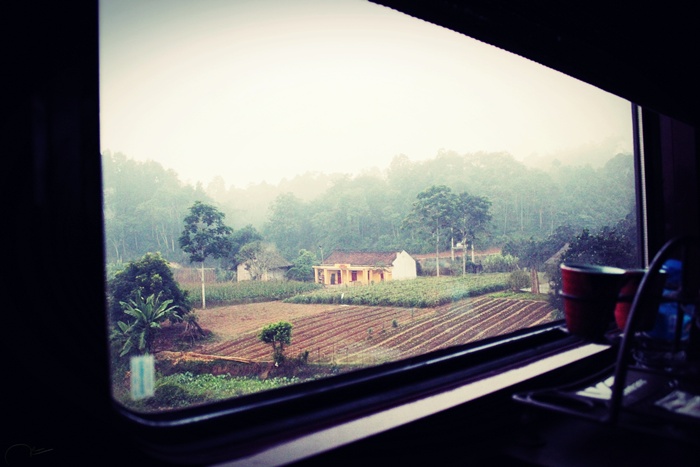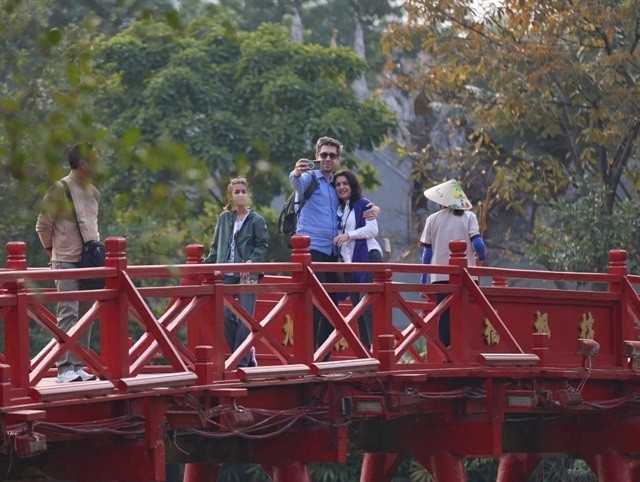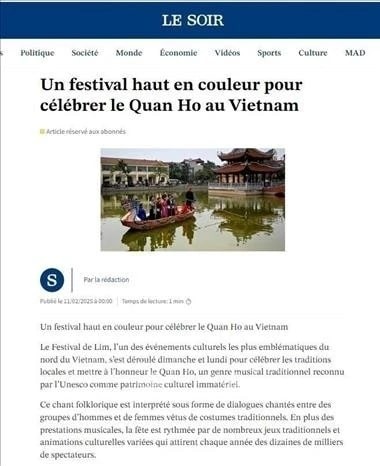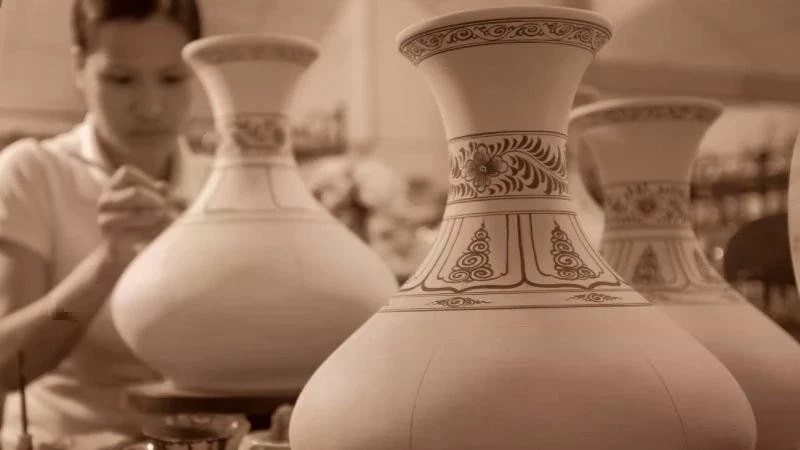Community tourism in Sapa
With its beautiful natural landscape and unique cultural identity of ethnic minorities, Sa Pa town, in Lao Cai province, is focusing on developing community-based tourism (homestay), in an attempt to reduce overcrowding in urban areas and remove poverty, as well as developing sustainable tourism in association with the protection of its cultural identity and local ecological environment
Towards villages and community
Hoang Van Muc, who is the initiator of the homestay tourism model in Ta Van commune, talk about improving the quality of tourism services in the Giay ethnic people’s families to attract and retain visitors, especially foreigners, from the preservation of cultural identity, customs, the improvement in environment's hygience to better quality of handmade brocade and ethnic cuisines cooking workshop.
In the local dialect, Ta Van means ‘big arc’. As a matter of fact, Giay ethinic people’s houses dangle on the bow-shaped mountain slope, embracing the Muong Hoa stream and winding around the terraced fields. Community-based tourism is a tourism model for tourists, who enjoy experiencing and learning about local customs and habits. They will eat and sleep at local people’s houses, as well as work with the local people, as they explore the unique local culture. For this reason, the model has its own appeal.
 |
Affordable homestay, a great choice for both international and domestic tourists (source: toplist.vn)
Arriving in Ta Van on summer days, it is clearly to see the image of foreign children playing with ethnic minority children in a very natural, fun and friendly way, as if they have lived close together since childhood; or the image of foreign tourists visiting the terraced rice fields, the Muong Hoa stream and admiring the traditional handicrafts of woven flax, indigo dyed, painting beeswax on brocade, with an introduction from local "guides". The visitors have an opportunity to experience the feeling of being "real citizens" of the land. According to Polin, a French tourist, her family has chosen the homestay tour, as it enables them to stay at the local people’s house and learn about their culture and customs.
Creating a community tour is not easy, according to Ly Thi Ly, an owner of a family homestay at Ton Van Giay 2 hamlet. With the tourism model, the services, rooms, meals are not a big problem, meanwhile the most important aspect is how to make visitors feel comfortable, while enjoying life and the culture of the land, she added.
According to Ta Van commune People's Committee Chairman Phan Manh Hoang, Ta Van Giay 1 homestay group is one of the five homestay groups in Vietnam that has been awarded the ASEAN prize.
Currently, among 140 local households, there are more than 40 households are registered as homestay models. With a capacity of 10 to 20 people in each house, during peak season, the households can welcome around 200 to 300 tourists every day on average.
The price for one night stay at Ta Van is quite cheap, ranging from VND100,000 (US$4.4) to VND150,000 (US$6.6), depending on the room type. However, businesses have also invested in high-grade rooms, which can cost up to VND1 million (US$44) per night. In addition, Giay people in Ta Van also offer visitors an opportunity to enjoy ethnic cuisine and cultural performances such as the fan dance, pipe singing and folk singing.
In order to meet with the demand of tourists and promote the potential of the climate, landscape and multi-colored cultures of its ethnic groups, Sapa district has focused on investing in the development of the community tourism model. Up to now, Sapa district has 154 homestays in Ta Van, Lao Chai, Ban Ho and Ta Phin communes, earning tens of billions of dong each year.
Creating product value
Community tourism development is headed in the right direction in Sapa, but the sustainable development of this type of tourism can have its problems. For this reason, the Lao Cai provincial Department of Culture, Sports and Tourism and Sapa district’s authorities have defined the motto "turn heritage into assets".
Accordingly, it is necessary for each community and village to have their own distinctive product. In order to achieve the goal, Sapa has focused on preserving traditional festivals, such as the Gau Tao festival, the Khen (a type of wind instrument) dancing festival, Xoe dancing, fan dancing and Cap sac (coming-of-age) ritual.
After preserving and restoring the original festivals, Sapa brings its festivals and tourist events into towns, communes and villages, to mark the occasion of the Lunar New Year, spring festival, as well as national holidays in the year.
In the communes, ethnic art performing troops have been established, in order to introduce local folk culture to visitors. The idea has contributed greatly to the preservation of national cultural identity, serving domestic and foreign tourists while creating jobs and income for local people.
In addition, Sapa strengthened the embellishment and protection of Muong Hoa valley, which have been recognized as national historical and cultural monuments, and local terraces recognised as national relic sites at Trung Chai, Ta Van, Hau Thao and Sa Sa Ho communes.
 |
From Hanoi to Lao Cai, most visitors love taking trains. (source: Xanh magazine)
In order to create a tourism product value chain, Sapa has strengthened regional links through community tourism routes.
In addition, the district has also encouraged and supported enterprises to co-ordinate with local people and authorities in each village and commune, to invest and exploit the potential and advantages of tourism. Accordingly, each local will co-ordinate with travel agencies in attracting visitors, preserving cultural identity and managing tourism.
Nowadays, thanks to Noi Bai - Lao Cai expressway and the Fansipan cable car complex, Sapa is expected to become a national tourism destination.
According to Le Manh Hao, Vice Chairman of the People's Committee of Sapa district, in the first six months of 2017, the number of tourists to Sapa reached more than one million, double the amount over the same period last year./.
( VNF/NDO )
Recommended
 Travel
Travel
Luxury Train From Hanoi To Hai Phong To Be Launched In May
 Travel
Travel
Phong Nha Named Top Budget-Friendly Travel Destination for Spring 2025: Agoda
 Travel
Travel
Four Indian Films Introduced to Lao Cai Audience
 Travel
Travel
Vietnam to Waive Visas for Citizens from 12 Countries until 2028
 Travel
Travel
Ninh Binh Full-day Tour among World’s Top Experiences: TripAdvisor
 Travel
Travel
Belgian Media Praises Lim Festival’s Vibrant Folk Culture
 Travel
Travel
Vietnam: Ultimate Family-Friendly Destination for RoK Travelers
 Travel
Travel
